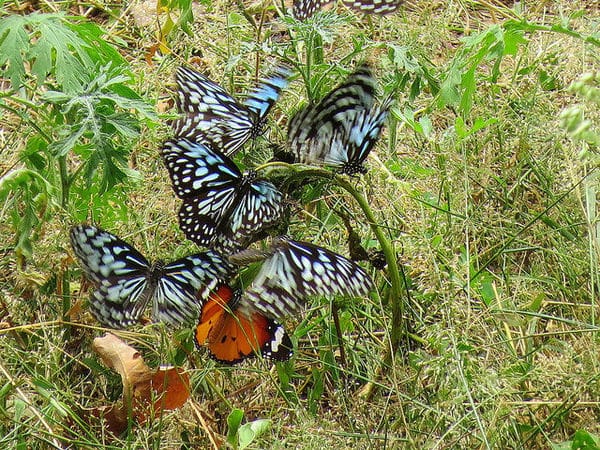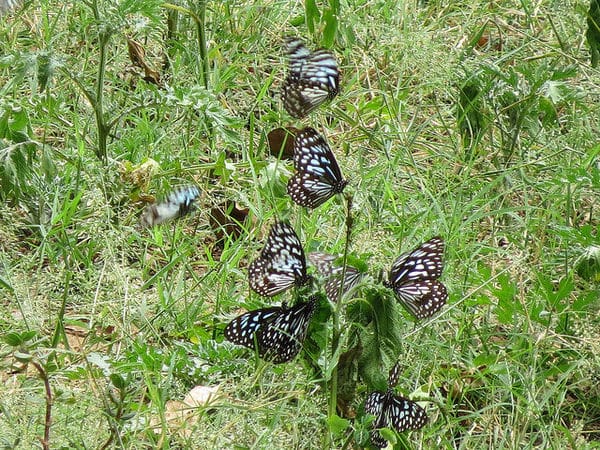We witness a beautiful aerial stream of butterflies between March and May, and once again between September and November. These butterflies are not, like other wildlife, only to be found in the forests; you can often see them floating around you, and past you, as you walk in the city.
The most common butterflies that migrate twice a year are the Blue Tiger, and the Common Crow. The Common Crow is a dark brown, almost black butterfly; but the Blue Tiger is a blue jewel!
You can see them clustering on some plants even in uncultivated fields.

The butterflies migrate to the Western Ghats to breed, and it’s amazing to think that it’s the progeny who return.

Several thousand butterflies, of course, fail to complete the journey, and become food for predators, or decompose back into nature, thus completing the cycle of life and death.
Here’s a video I took, of Blue Tigers flickering in large numbers as they fly about an open area.
Another interesting fact is that the scientific name of these butterflies is ‘Tirumala‘… A tip of the hat to the Lord of the Seven Hills.
So look around and notice the winged travellers as you walk around our city at this time!
This post is dedicated to my Nature guru, S.Karthikeyan, who will never agree that he’s very knowledgeable about butterflies. 😀